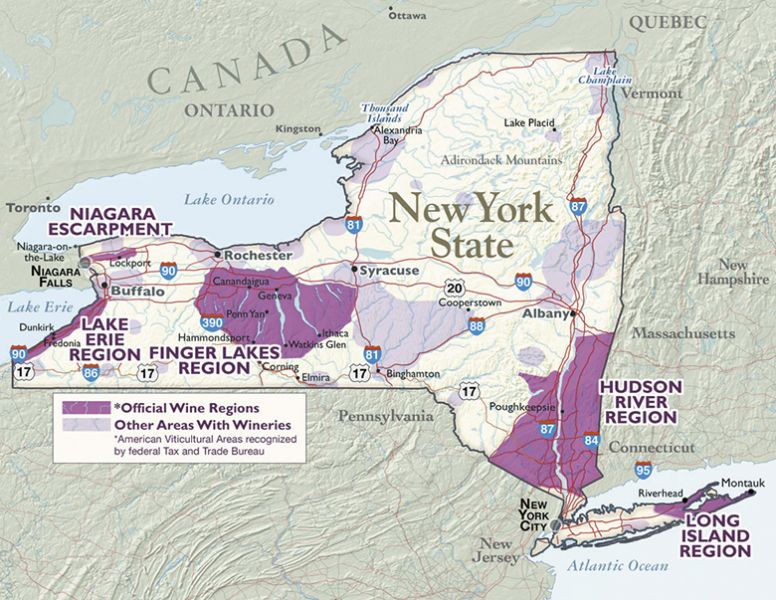Who’s on Third?
Not New York, not by a country mile
I’m calling you out, New York: Oregon beats you — hands down — in the production of vinifera wine.
During an otherwise peaceful conversation at a recent Oregon wine industry dinner, someone at my table unwittingly pushed one of my simmering hot buttons. “It bugs me,” she said innocently, “that New York is the third largest wine producer in the country.”
“It’s not,” I replied, trying to contain my agitation, “not if you’re talking about fine wine.”
At a fundamental level, this is an unimportant statistic. As a wine-producing state, Oregon has always, and rightly so, emphasized the quality of our wine production, not its quantity. Who cares how much wine we make? The point is that the wine we make is really fine wine!
But in today’s world of the 140-character attention span, sound bites create reality. Truth by headline trumps nuanced analysis of verity. Take this 2014 lead in Wines & Vines magazine as an example: “New York Ranks Third in Wine Production.”
If that’s all the “truth” you know, then what perception are you left with? You’d be forgiven for believing that New York is cranking out millions of cases of Riesling and Chardonnay and maybe Pinot Gris and Sauvignon Blanc and perhaps Pinot Noir and Merlot and Cabernet Franc, and, gosh, who even knew New York grew so much wine?
They don’t.
The raw statistics of wine production, as Wines & Vines reported, seem like a slam dunk: New York makes 12 million cases of wine and Oregon 3.3 million. They beat us by a country mile. Case closed. But this is truth by sound bite — there’s far more to the story.
Let’s do some nuanced analysis.
According to numbers provided by Cornell University Extension’s Tim Martinson, there were 31,803 vineyard acres in New York in 2011 (the most current available statistics). Martinson advised me to subtract the 18,883 acres of Concord grapes. It “distorts” the totals, he said, because of the “insignificant” amount of wine made from Concords (which Wines & Vines apparently didn’t do for their story). That leaves 12,920 acres of total New York wine-producing vineyard land.
But of that total, only 4,290 acres are devoted to Vitis vinifera grapes — the classic European varieties that produce nearly all of what the world calls “fine wine.” The majority of New York’s vineyards — 8,630 acres — are devoted to non-vinifera and hybrid grapes.
Same with tonnage. Using Martinson’s figures, in 2011 New York produced 188,171 tons of grapes minus 120,383 tons of Concord, leaving 67,788 total tons of wine grapes. However, only 14,652 tons were vinifera grapes. That means New York produced approximately 879,120 cases of vinifera wine — using a rule of thumb that a ton of grapes produces 60 cases of wine. If all the Concord production were turned into wine (which it isn’t), that would account for the exaggerated 12 million cases of New York wine production.
Let’s review: New York has 4,290 acres of vinifera grapes producing 879,120 cases of vinifera wine (2011 numbers). Oregon has 23,955 acres of vinifera grapes producing 3,374,760 cases of vinifera wine (2012 numbers).
So who’s the third major producer of fine wine (vinifera) in the U.S.? It’s Oregon. By a country mile.
Is this important? Yes. In wine competitions, third place earns you a bronze medal; fourth place affords you exactly nothing.
I believe that if you don’t challenge oversimplification you risk letting the simplifiers set the perceptual agenda. If Oregon doesn’t protest the skewed statistic of New York’s wine production, then we risk losing market credibility for our wine quality. Quantity rank does affect people’s perception of quality. If you’re seen as third, you’re in the running; if you’re seen as fourth, you’re out of the race.
That’s why I’m making such a big deal out of who’s on third regarding wine production — fine wine production.








